November 25, 2018 - The inspiration of nature and the importance of history are woven into the fabric of America’s public lands. Immortalized by some of our nation’s greatest literary heroes, public lands have been the settings and subjects of novels, poems and songs. For some influential and revered writers, their haunts and homes are now preserved as historic places, allowing public lands to help tell their story. Some of the greatest literary history lies within public lands, and future literary greats visit to hear the echoes and write the next chapter.
Here are some of the authors whose works are forever memorialized in public lands.
Ann Weisgarber
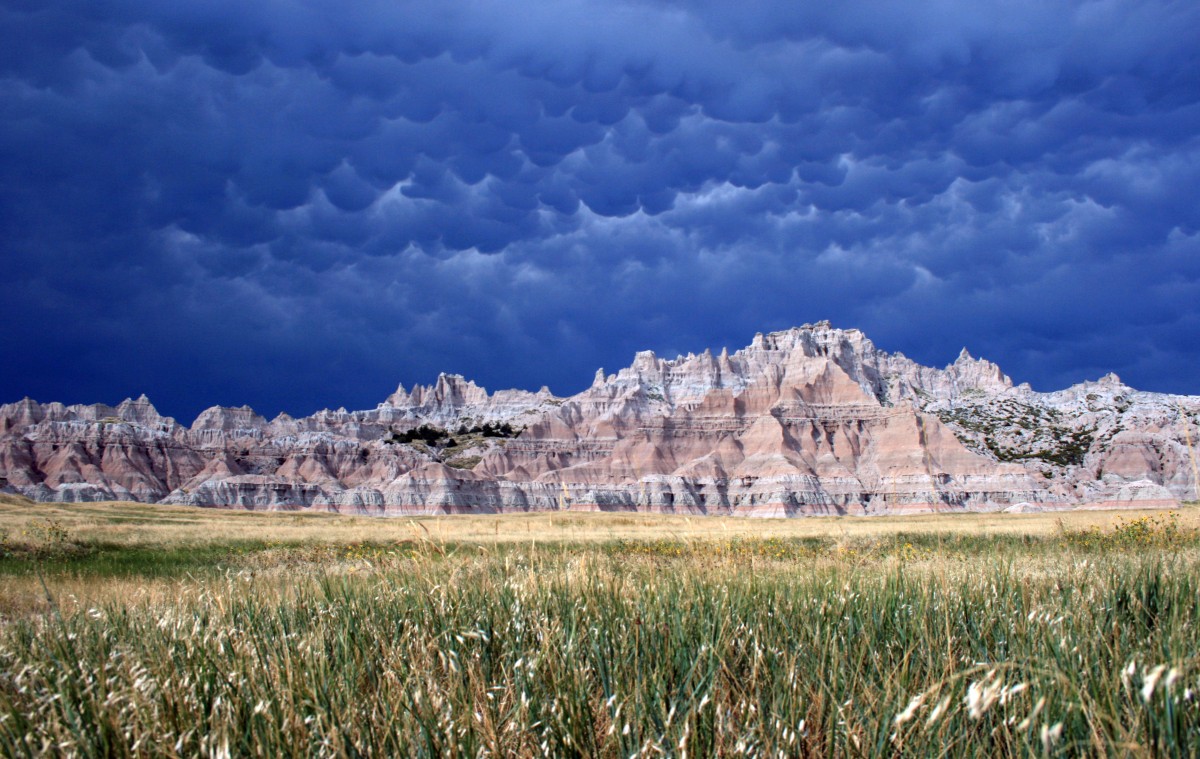 Ann Weisgarber attended an artist-in-residence program here at Badlands National Park which further inspired her novel The Personal History of Rachel Dupree. Photo by Cathy Bell, National Park Service.
Ann Weisgarber attended an artist-in-residence program here at Badlands National Park which further inspired her novel The Personal History of Rachel Dupree. Photo by Cathy Bell, National Park Service.
Ann Weisgarber’s novel The Personal History of Rachel Dupree speaks to the challenges of life on the homestead. Weisgarber submitted the first chapter of her book to the National Park Service and received a four week artist-in-residence writing program at Badlands National Park in South Dakota in 1999. Much of her inspiration for this novel comes from her time at Badlands and from research on African American Homesteaders. This park-based masterpiece has already earned great success as a novel, and it is soon to be a major motion picture.
“One picture, though, stopped me. It was of a woman sitting before her sod dugout. She was alone… That was remarkable enough, but there was something else. She was an African American… The Personal History of Rachel DuPree is not my book, but ours.” - Ann Weisgarber, on The Personal History of Rachel Dupree
Carl Sandburg
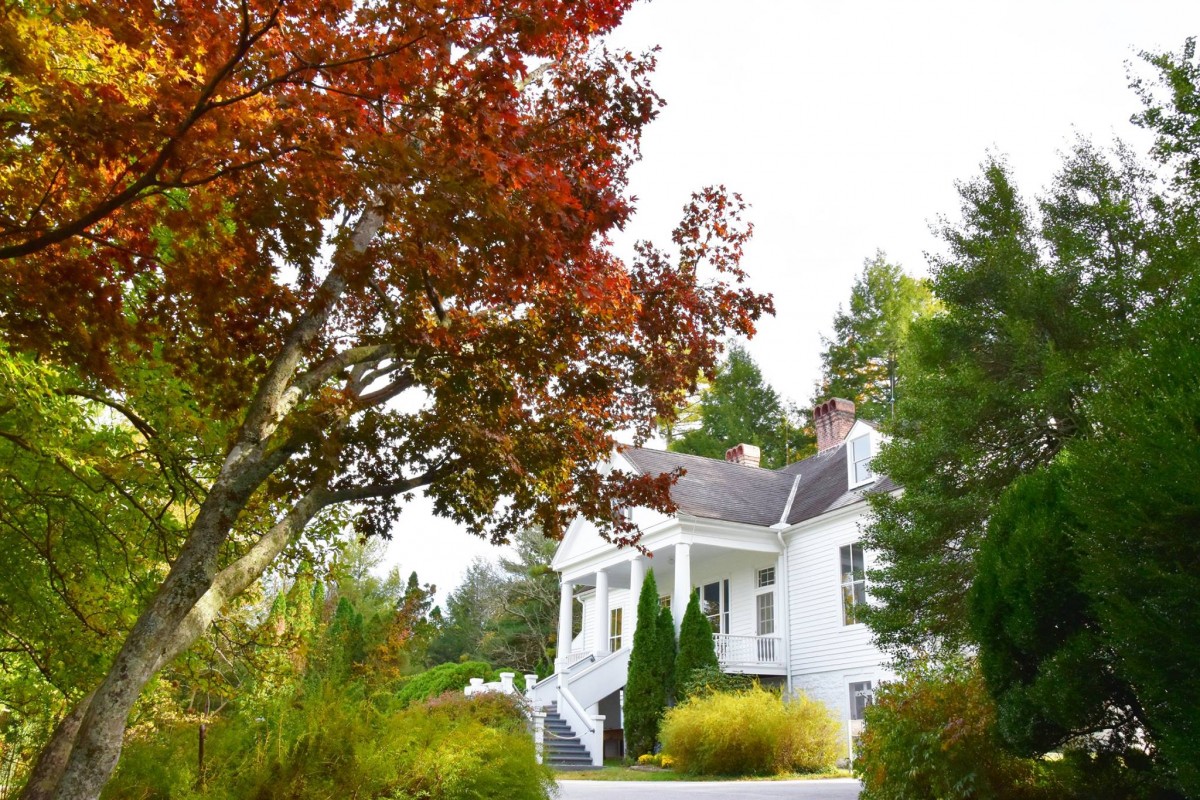 Sandburg’s Connemara estate encompasses 264 acres of land. Visitors are inspired by both the rich history and the beautiful nature of the site. Photo by National Park Service.
Sandburg’s Connemara estate encompasses 264 acres of land. Visitors are inspired by both the rich history and the beautiful nature of the site. Photo by National Park Service.
Carl Sandburg is known for transforming everyday issues into poetry. His works often focused on average people and spanned from the hardships of industrial cities to the solace of the great outdoors. His famous masterpiece “Chicago Poems” focused on the “inexplicable fate” of vulnerable working men, women and children during wartimes. Sandburg captured the minds and hearts of Americans across the country as he presented clear, direct and honest work, and he quickly became known as the “poet of the people.” But Sandburg’s talents span past poetry -- his children’s books and songwriting share the same messages of Americanism that he was so well-known for. His poetic advocacy earned him multiple Pulitzer Prizes and made the Carl Sandburg National Historic Site in North Carolina the first national park unit to be dedicated in the honor of an American poet. Get a glimpse into the Sandburg family’s lives by visiting their home on the Connemara estate, hiking through surrounding scenic trails or meet the goats being raised at Mrs. Sandburg’s dairy farm. Sandburg’s influential legacy lives on through the museum that preserves his 12,000 book library and his poems, letters, photographs and books.
“The people have come far and can look back and say,
'We will go farther yet'.” - Carl Sandburg, excerpt from “The People, Yes”
Francis Scott Key
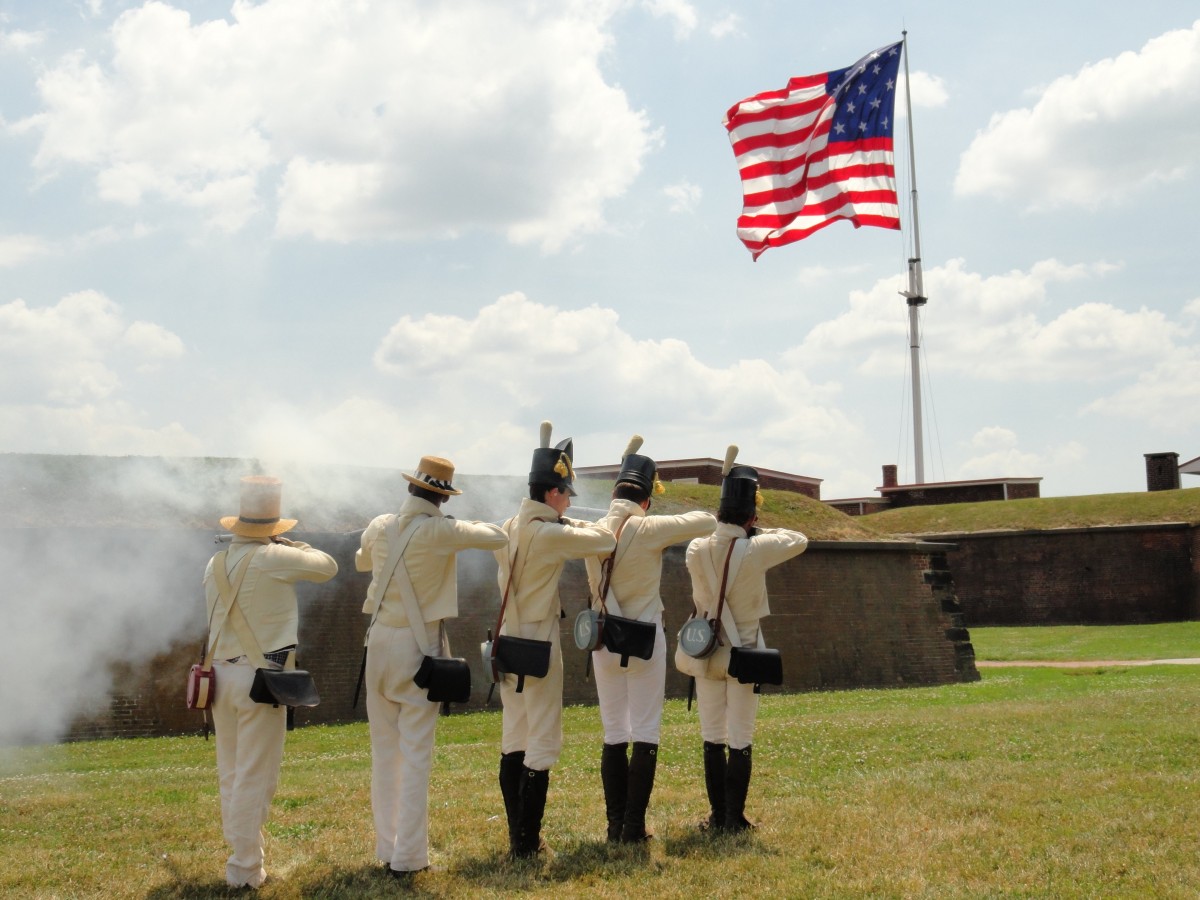 The American flag flies proudly over Fort McHenry National Monument and Historic Shrine, reminiscent of Francis Scott Key’s patriotic anthem. Photo by Howard Lessey (www.sharetheexperience.org).
The American flag flies proudly over Fort McHenry National Monument and Historic Shrine, reminiscent of Francis Scott Key’s patriotic anthem. Photo by Howard Lessey (www.sharetheexperience.org).
The immortal words of what would become our national anthem were penned by lawyer-turned-poet Francis Scott Key. After the 25 hour-long bombardment of Fort McHenry during the Battle of Baltimore in 1814, Key witnessed the American flag flying proudly over the fort the following morning. This scene inspired him to write a poem entitled “Defence of Fort McHenry,” which has been adapted into the “The Star Spangled Banner.” Fort McHenry National Monument and Historic Shrine in Maryland stands as a reminder of the heroism during the battle and honors Key’s patriotic words. Visitors always get a special thrill watching the flag wave above the fort as the anthem plays.
“O say, does that star-spangled banner yet wave,
O'er the land of the free and the home of the brave?” - Francis Scott Key, from “Defence of Fort McHenry”
Nevada Barr
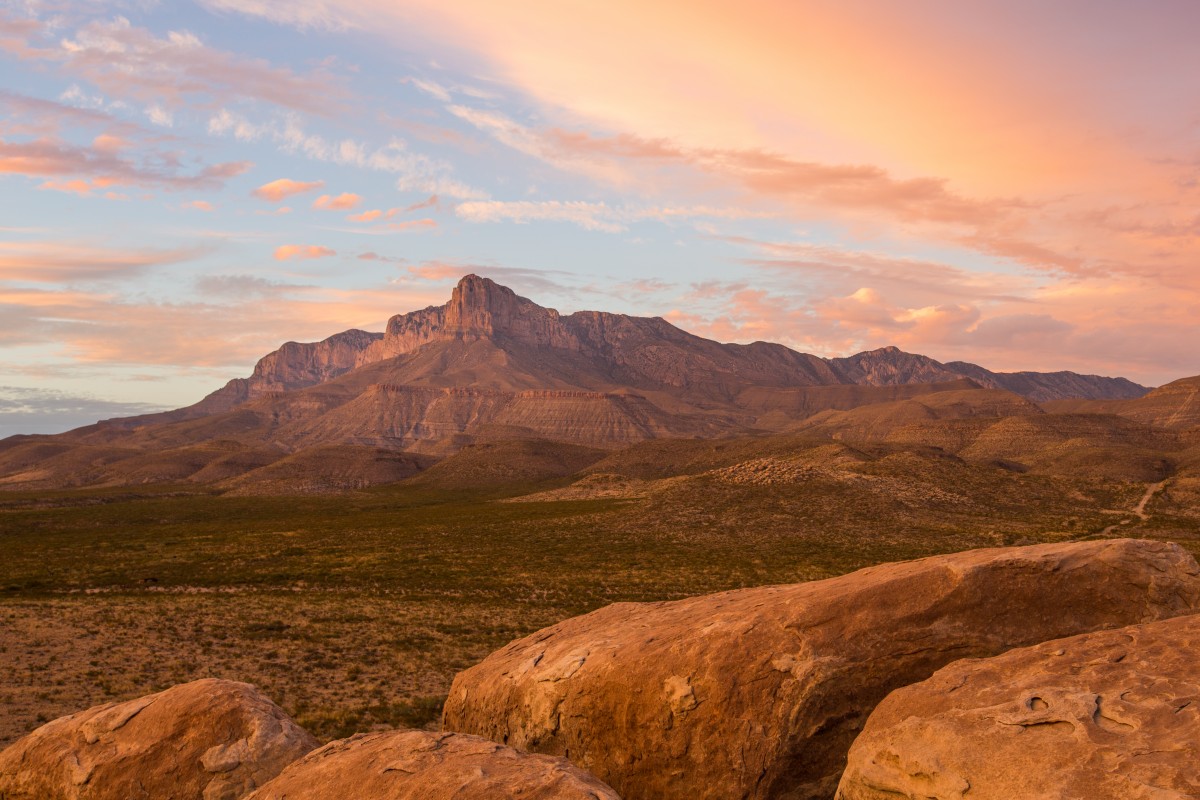 Guadalupe Mountains National Park at sunset, the first of many public land inspirations for Nevada Barr’s Anna Pigeon mystery series. Photo by Rowdy Winters (www.sharetheexperience.org).
Guadalupe Mountains National Park at sunset, the first of many public land inspirations for Nevada Barr’s Anna Pigeon mystery series. Photo by Rowdy Winters (www.sharetheexperience.org).
Looking for a new mystery series to challenge your brain and encourage you to visit public lands? If so, check out Nevada Barr’s Anna Pigeon mystery series. The books are set in national parks across the country and showcase the adventures of main character Anna Pigeon, a National Park Service Ranger. The inspiration for these books came from Barr’s own time as a Park Ranger at Guadalupe Mountains National Park in Texas. Although you might not find a mystery to solve when visiting the parks, adventure is always a guarantee!
“In a world that is becoming increasingly virtual, the parks remain places of visceral beauty. Places where we can remember that we are but a small part of the life on this planet, and that it is a truly wonderful planet and the only one we've got.” - Nevada Barr
Edgar Allan Poe
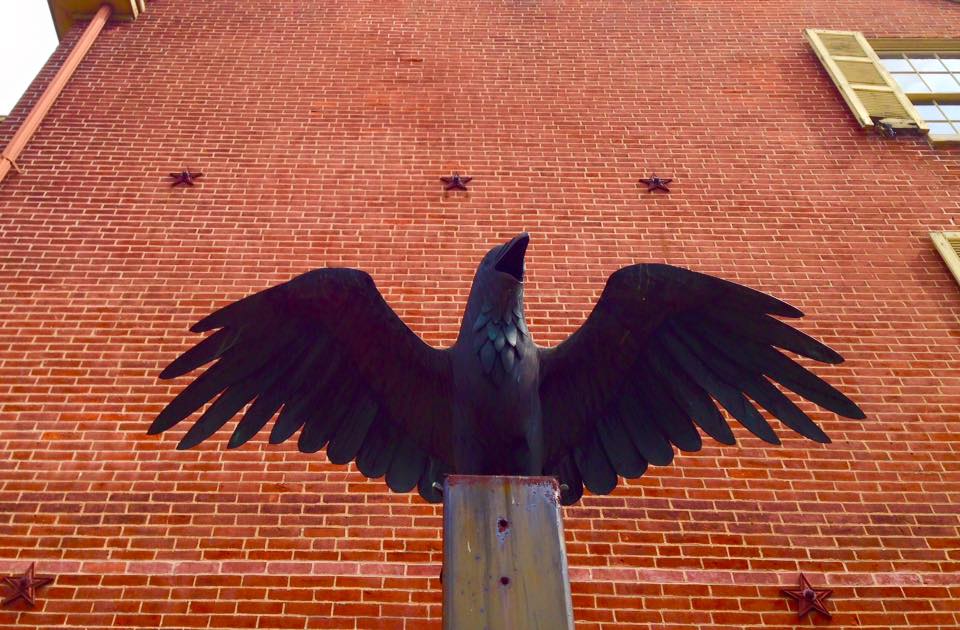 Edgar Allan Poe’s famous poem “The Raven” is the inspiration for the statue that now sits outside of his former home. Photo by National Park Service.
Edgar Allan Poe’s famous poem “The Raven” is the inspiration for the statue that now sits outside of his former home. Photo by National Park Service.
A famed poet and short story author, Edgar Allen Poe endured many hardships throughout his life, such as a strained relationship with his foster father, overwhelming financial troubles and the heartbreak of his wife’s fatal illness. His unparalleled creativity allowed him to channel these emotional times into influential written works. He is considered one of the greatest American authors, and the Edgar Allan Poe National Historic Site in Pennsylvania stands as a testament to his influence. Visitors can explore the home that inspired some of his most famous stories. The cellar shares striking similarities to the tomb in “The Black Cat,” the creaky old floorboards of the house remind many of the crime-concealing floorboards in “The Tell-Tale Heart” and “The Masque of the Red Death” strikes eerie parallels to his wife’s contagious illness. Visitors can also listen to readings of his works in the Reading Room as they try to draw connections between the house and Poe’s fictional works.
“In visions of the dark night
I have dreamed of joy departed—
But a waking dream of life and light
Hath left me broken-hearted.” - Edgar Allan Poe, excerpt from “A Dream”
Louisa May Alcott
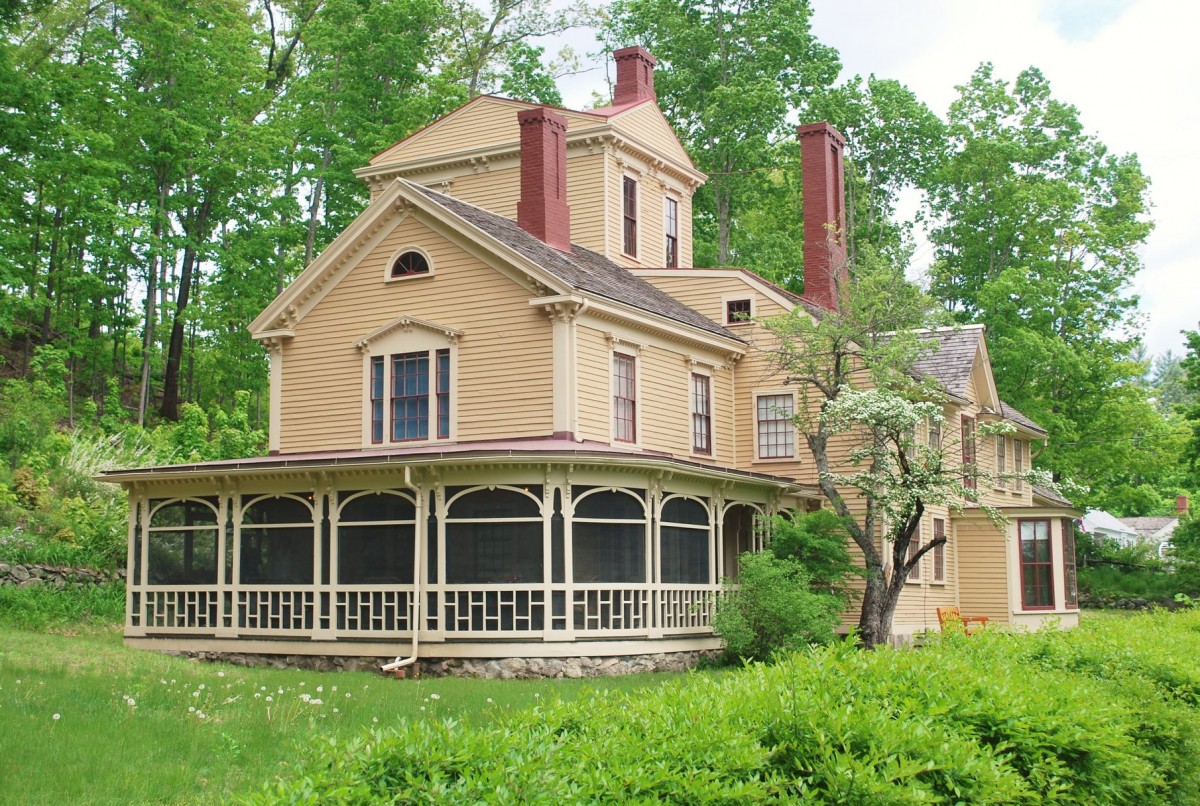 The Wayside, otherwise known as the “Home of Authors,” has housed many great literary families throughout the decades. It is now preserved for future generations to explore. Photo by the National Park Service.
The Wayside, otherwise known as the “Home of Authors,” has housed many great literary families throughout the decades. It is now preserved for future generations to explore. Photo by the National Park Service.
Years ago, The Wayside Home in Minute Man National Historical Park in Massachusetts housed one of the great literary families. Louisa May Alcott spent her childhood years at The Wayside, inspiring her semi-autobiographical novel, Little Women. The characters in the novel are based off of Alcott’s sisters, and Louisa herself is a main character, Jo. The Alcott sisters’ childhood imaginations ran wild at The Wayside, and led to the creation of stories and plays that they often performed in their barn. “The Operatic Tragedy” in Little Women is based off of an eerie script with chilling villains that the young sisters created. Imagine yourself in the shoes of these classic characters and real-life sisters by taking a tour of The Wayside Home.
“There was a good deal of rustling and whispering behind the curtain, a trifle of lamp smoke, and an occasional giggle from Amy, who was apt to get hysterical in the excitement of the moment. Presently a bell sounded, the curtains flew apart, and the "Operatic Tragedy" began.” - Louisa May Alcott, from Little Women
Eugene O’Neill
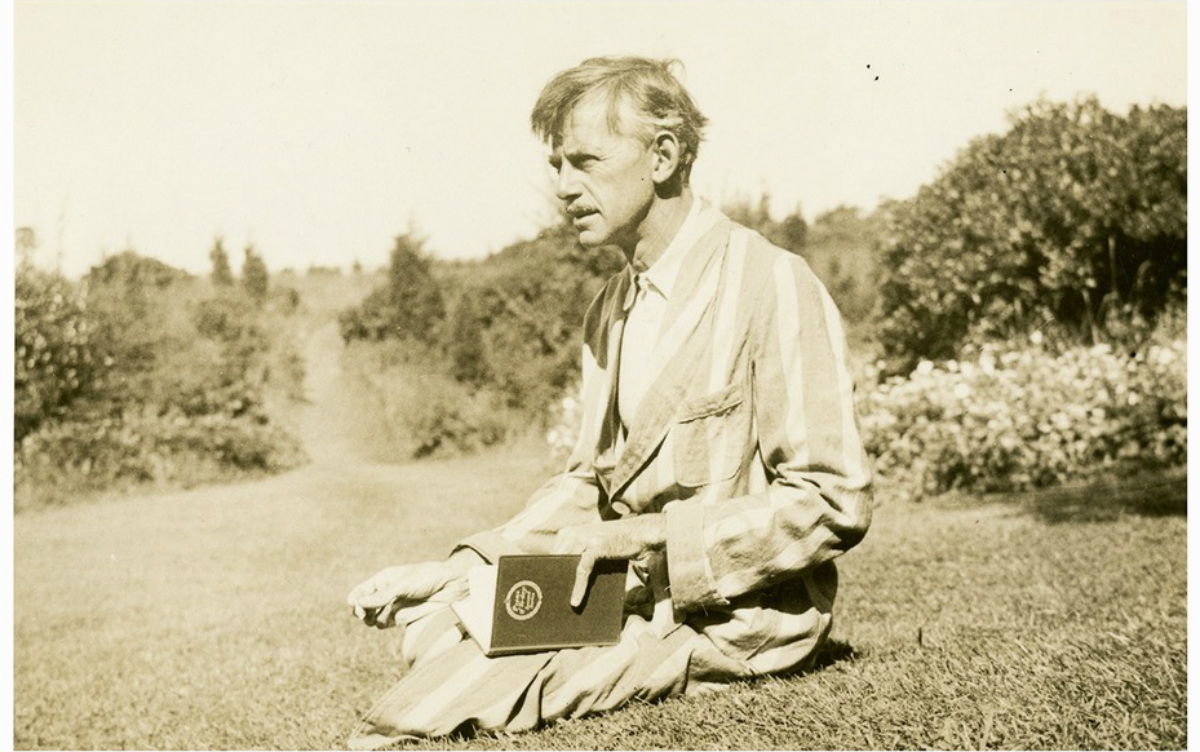 Eugene O’Neill sitting outdoors and writing. Photo from National Park Service archives.
Eugene O’Neill sitting outdoors and writing. Photo from National Park Service archives.
America’s only Nobel Prize-winning playwright and four-time Pulitzer Prize winner, Eugene O’Neill left an indelible mark on American theater. He wrote dozens of plays spanning several genres and influenced Broadway in a way that had not been done before. O’Neill struggled with personal trials and health impairments, all of which were channeled into his works. His four autobiographical plays are some of his most famous, written in rapid succession when he lived at his cherished Tao House. They are The Iceman Cometh, Hughie, A Moon for the Misbegotten and the Pulitzer Prize-winning Long Day's Journey Into Night. Tour O’Neill’s house and honor his incomparably influential works by visiting Eugene O’Neill National Historic Site in California.
“There is no present or future-only the past, happening over and over again-now.” - Eugene O'Neill, from “A Moon for the Misbegotten”
Henry David Thoreau
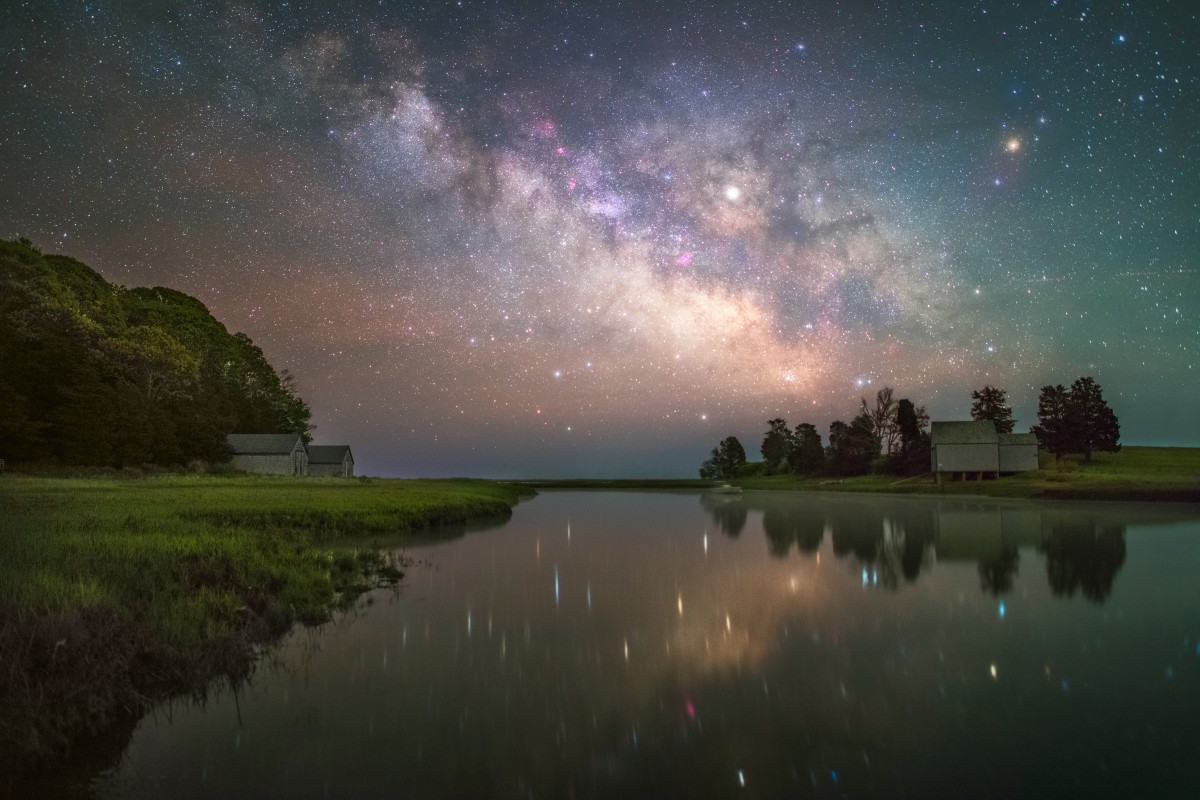 The Milky Way rising over a salt pond at Cape Cod, one of Henry David Thoreau’s favorite natural sites. Photo by Manish Mamtani (www.sharetheexperience.org).
The Milky Way rising over a salt pond at Cape Cod, one of Henry David Thoreau’s favorite natural sites. Photo by Manish Mamtani (www.sharetheexperience.org).
An endless fascination with the symbiotic relationship between humans and the vast outdoors guided Henry David Thoreau’s literary works. Living simply with a deep connection to the Earth is exactly what Thoreau intended to do when he moved to a small reclusive cabin in Walden Woods. His favorite spot, Walden Pond, was his inspiration for the acclaimed Walden. Thoreau expertly examines the interaction between the solace of nature and the chaos of human life. Explore how you interact with the environment at Walden Pond National Historic Landmark, just as Thoreau did years ago. Thoreau’s great interest in the dynamics of the seashore also motivated him to visit and write about Cape Cod National Seashore in Massachusetts. He closely observed the forces of the water, essence of the sand and the threshold between the two, which influenced his book Cape Cod. It explores the natural beauty of this seashore and can spark your next visit to Cape Cod!
"A man may stand there and put all America behind him." - Henry David Thoreau, on Cape Cod seashore
Laura Ingalls Wilder
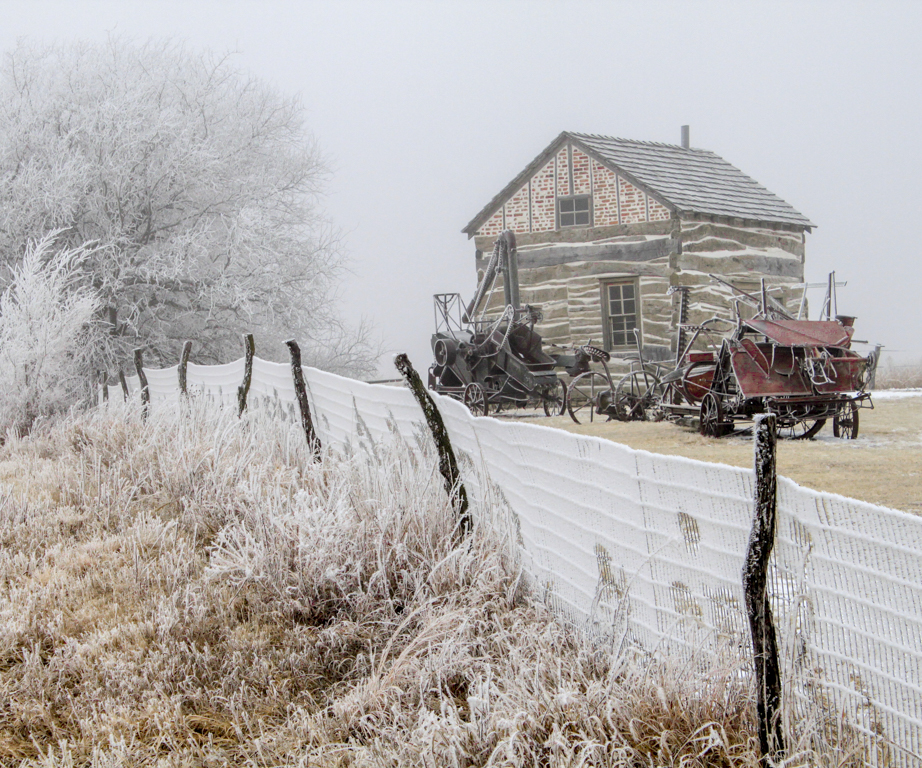 Winter sets in on Homestead National Monument in Nebraska. Laura Ingalls Wilder was greatly influenced by her childhood years spent homesteading. Photo by Bernadette Korslund (www.sharetheexperience.org).
Winter sets in on Homestead National Monument in Nebraska. Laura Ingalls Wilder was greatly influenced by her childhood years spent homesteading. Photo by Bernadette Korslund (www.sharetheexperience.org).
Laura Ingalls Wilder is best known for her children’s books about life on the prairie. The Little House book series, inspired by her own childhood, highlights the lives of homesteaders, filled with family, adventure, and the trials and triumphs of the great outdoors. Her books have become ageless staples in libraries, schools and homes across the country. Homestead National Monument of America in Nebraska honors homesteaders like the Ingalls family and recognizes the influence homesteading had on Laura Ingalls Wilder’s work.
“The true way to live is to enjoy every moment as it passes, and surely it is in the everyday things around us that the beauty of life lies.” - Laura Ingalls Wilder
Charles Alexander Eastman
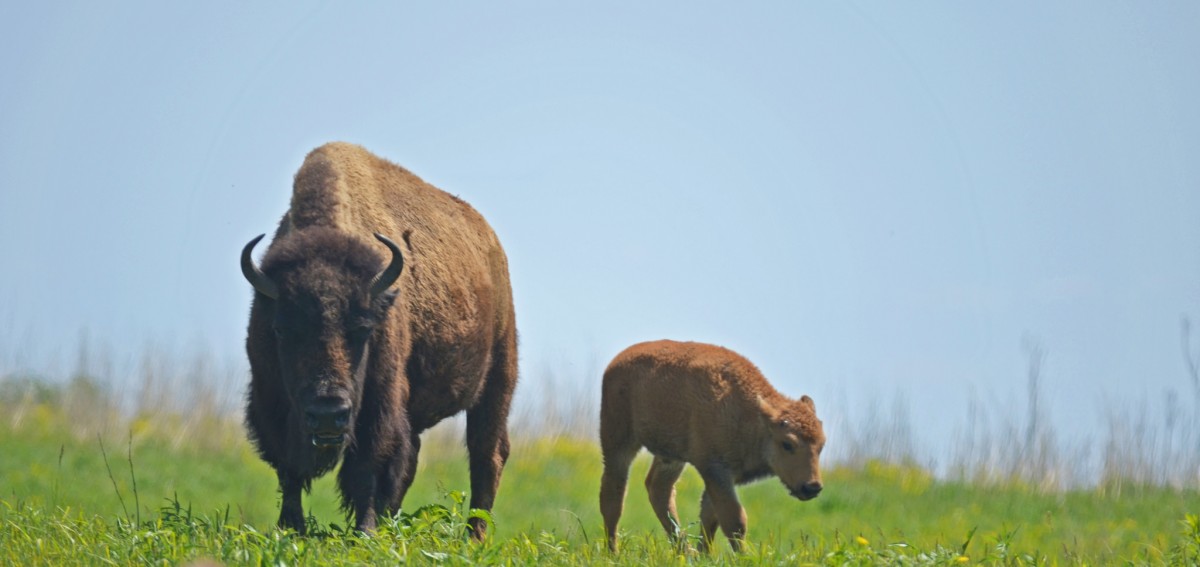 Neal Smith National Wildlife Refuge in Iowa is a great place to see bison and learn about the works of Charles Alexander Eastman. Photo by Joanna Gilkeson, U.S. Fish and Wildlife Service.
Neal Smith National Wildlife Refuge in Iowa is a great place to see bison and learn about the works of Charles Alexander Eastman. Photo by Joanna Gilkeson, U.S. Fish and Wildlife Service.
Charles Eastman is a mixed-blood Souix and a well known and respected author and advocate for Indian culture. Despite his father’s decision to move his family off of tribal lands, he maintained a strong connection to his native heritage. Among his many works is From the Deep Woods to Civilization, an autobiographical account of this transition. Neal Smith National Wildlife Refuge in Iowa has previously used Eastman’s works as educational tools for students and teachers alike.
“One of the things that makes you feel good is to get out into nature—go walking, go hiking, go swimming in the ocean, or wherever you live, in a river or a lake, experience the beauty of America, experience how America is such a sacred place. Everywhere you go in this land, our people have been there and they have said, ‘This place is sacred.’” - Charles Alexander Eastman, from “Living in Two Worlds: The American Indian Experience”
George Perkins Marsh
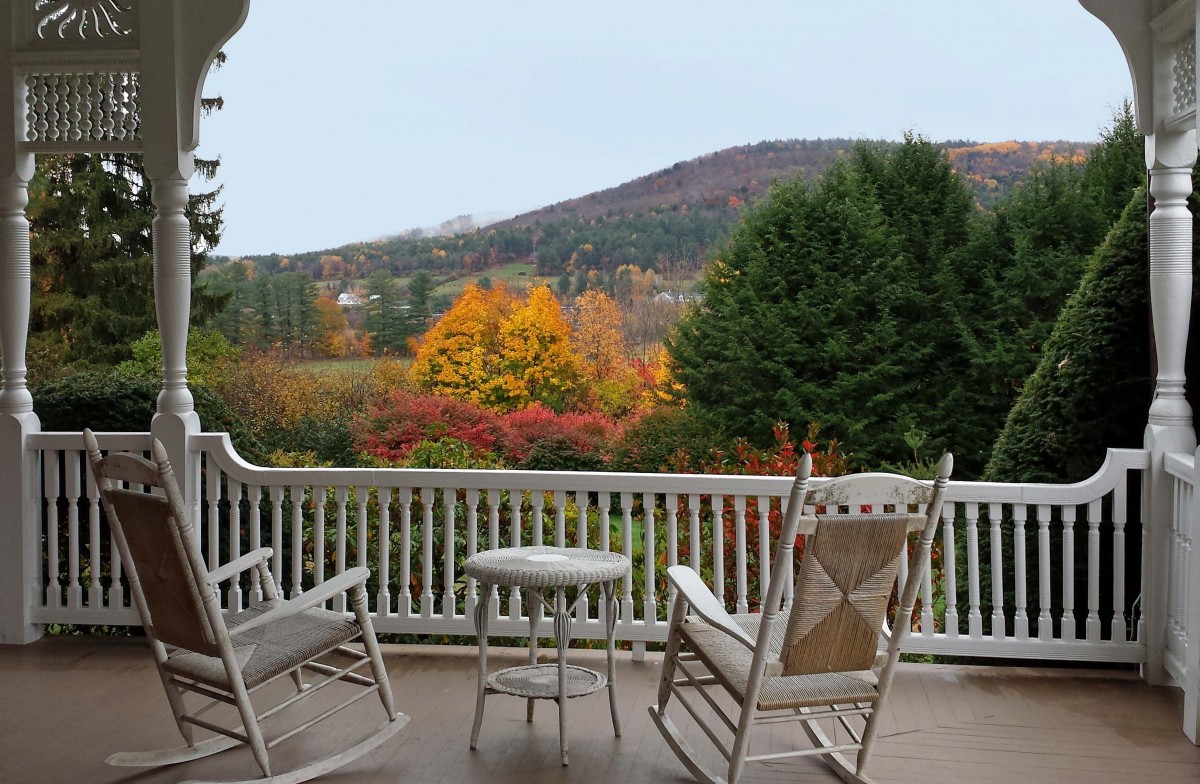 The childhood home of George Perkins Marsh sits next to mountain ranges, forests and an abundance of natural wildlife. This setting is where the great author first became enthralled with conservation. Photo by L. Shahi, National Park Service.
The childhood home of George Perkins Marsh sits next to mountain ranges, forests and an abundance of natural wildlife. This setting is where the great author first became enthralled with conservation. Photo by L. Shahi, National Park Service.
Conservation is a core part of the National Park Service’s mission, so it makes sense that the “Prophet of Conservation” is honored by a park. Marsh-Billings-Rockefeller National Historical Park in Vermont was the childhood home and inspiration for George Perkins Marsh. It was here that he first became fascinated with the seasonal nature of the forests and mountains surrounding his home, prompting lifelong research on the impacts of a changing ecosystem. After years of schooling, serving as a congressman and travelling as a U.S. ambassador, Marsh authored the groundbreaking book Man and Nature. Discussion of conservation and the interdependence of environmental and social relationships were ideas presented in this book over 150 years ago. The park honors the contribution that George Perkins Marsh gave to the conservation community, and the environmental thinkers who followed him.
“All Nature is linked together by invisible bonds and every organic creature, however low, however feeble, however dependent, is necessary to the well-being of some other among the myriad forms of life.” - George Perkins Marsh, from Man and Nature
Nathaniel Hawthorne
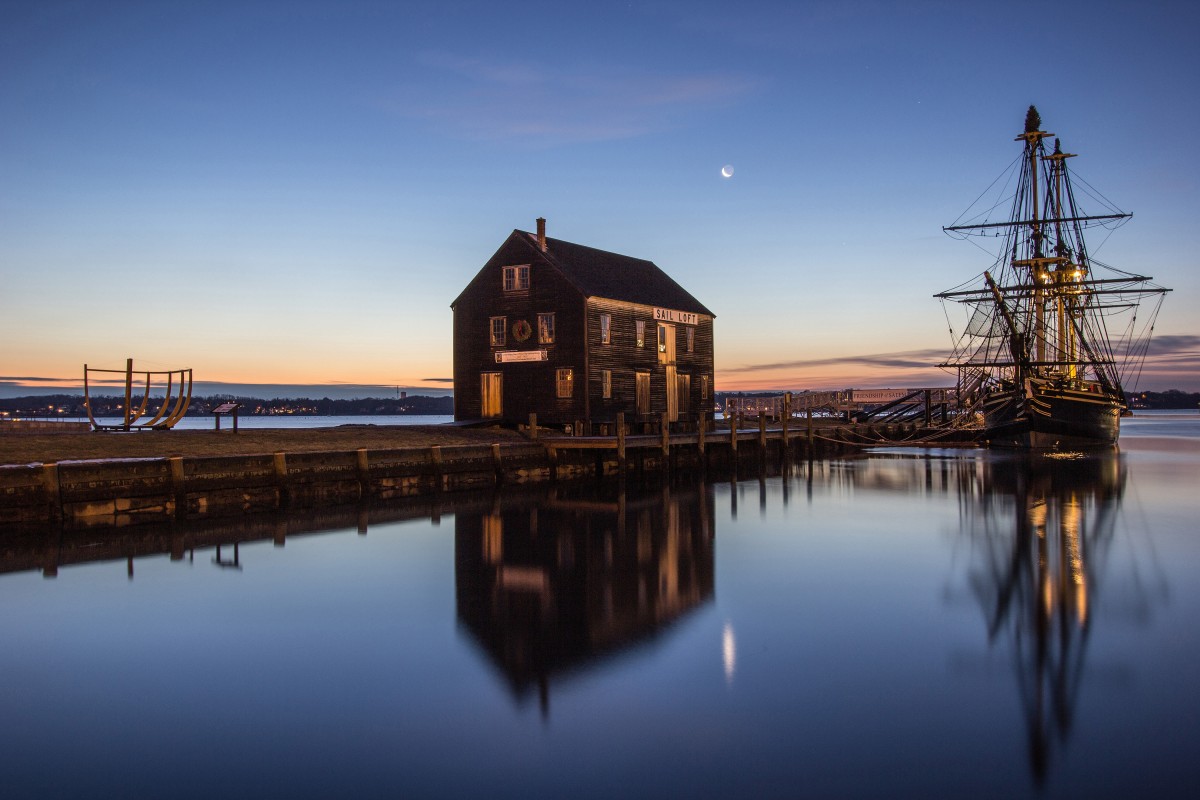 All is tranquil at Salem Maritime National Historic Site, a favorite spot and frequent setting of Nathaniel Hawthorne's work. Photo by Richard Matthias (www.sharetheexperience.org).
All is tranquil at Salem Maritime National Historic Site, a favorite spot and frequent setting of Nathaniel Hawthorne's work. Photo by Richard Matthias (www.sharetheexperience.org).
Nathaniel Hawthorne grew up three blocks from the Salem Custom House in Massachusetts. Years later, his childhood fascination became his place of work, and he became Surveyor for the U.S. Customs Service under friend and President Franklin Pierce. He cherished this position, but the change in administration from the Democratic to Whig Party in 1848 threatened his job security. He fought a painful and prolonged battle to remain Surveyor, but to no avail. The agony of losing this short-lived but well-loved job inspired many aspects of his classic novel, The Scarlet Letter. The Custom House is featured in the introduction, and memories from his time as Surveyor are scattered throughout the book. Although the novel was critically acclaimed across the country, citizens of Salem took offense to his depiction of the town and its simple-minded inhabitants. Hawthorne moved from Salem shortly after publishing. Visit Hawthorne’s magnificent Surveyor office and walk in the footsteps of his characters at Salem Maritime National Historic Site in Massachusetts.
“This old town of Salem. . . possesses, or did possess, a hold on my affections, the force of which I have never realized during my seasons of actual residence here. . . . there is within me a feeling for old Salem, which, in lack of a better phrase, I must be content to call affection.” - Nathaniel Hawthorne, from “The Custom House”
Louis L’Amour
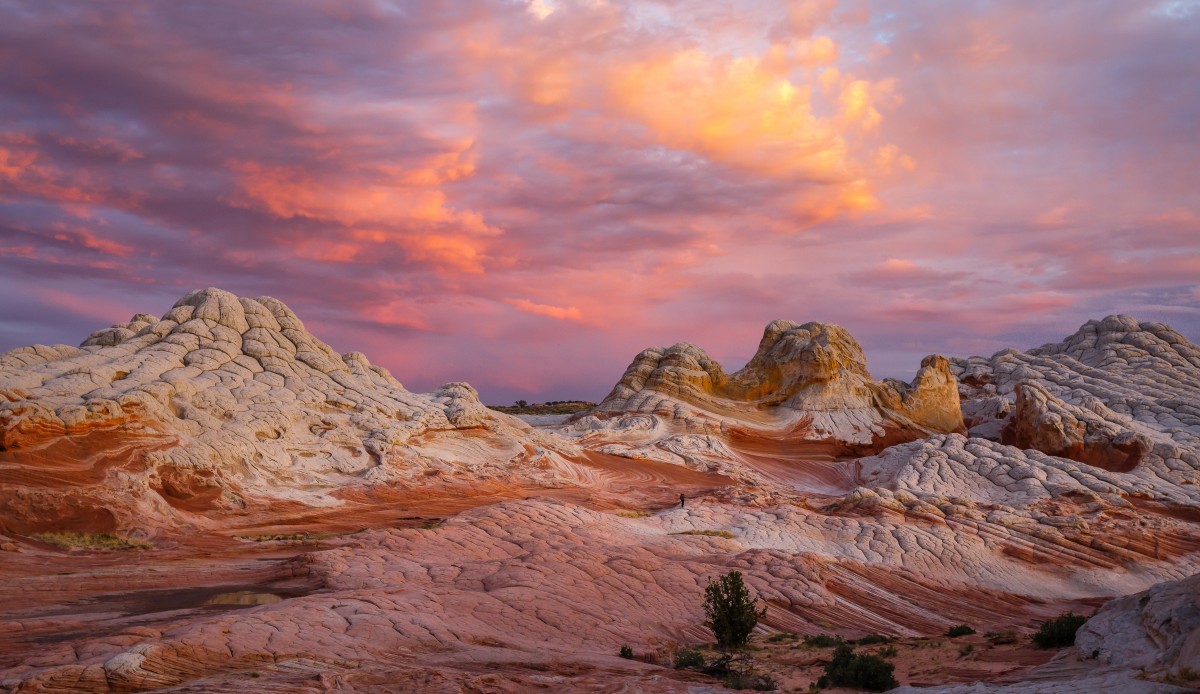 Imagine yourself in Louis L’Amour’s wild westerns at Vermilion Cliffs National Monument. Photo by Jessica Fridrich (www.sharetheexperience.org).
Imagine yourself in Louis L’Amour’s wild westerns at Vermilion Cliffs National Monument. Photo by Jessica Fridrich (www.sharetheexperience.org).
An unparalleled author in western literature, Louis L’Amour wrote wild tales of old western characters, storylines and landscapes. His most popular books, the Sackett series, feature a family of pioneers venturing through the untamed frontier. Much of the wilderness featured in his books are preserved in public lands today. The Continental Divide National Scenic Trailruns through the San Juan Mountains of Colorado, the original setting for Sackett. Fans can also visit Vermilion Cliffs National Monument in Arizona and imagine themselves in the shoes of a western outlaw, much like in Son of a Wanted Man. With over 200 million copies of his books sold, this author of the wild west has made an everlasting impact on the literary world.
“The trail is the thing, not the end of the trail. Travel too fast, and you miss all you are traveling for.” - Louis L'Amour
Paul Laurence Dunbar
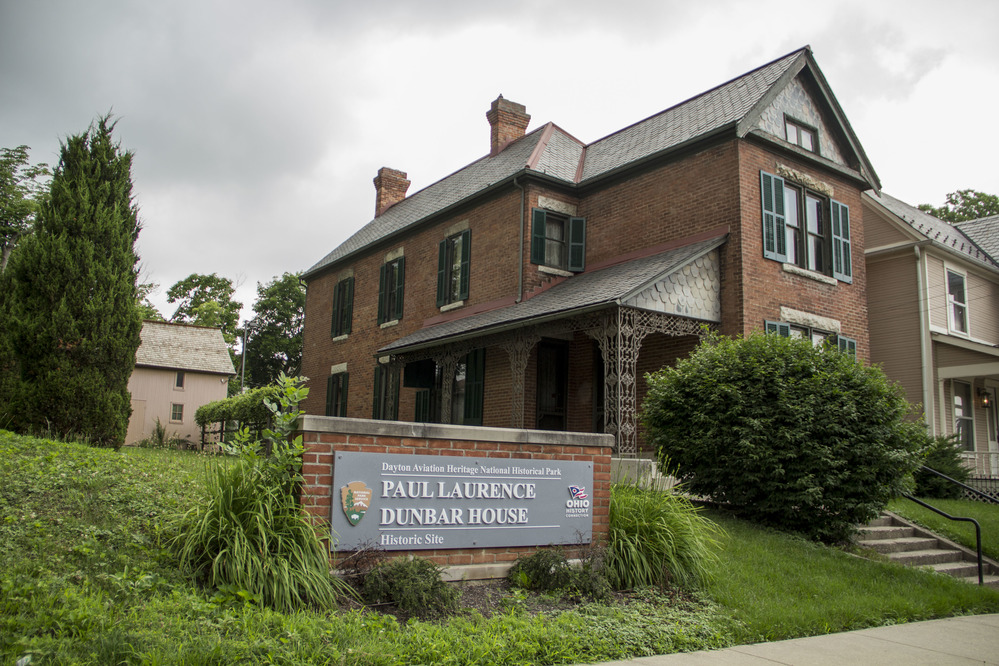 The Paul Laurence Dunbar House Historic Site honors the life and legacy of famed poet Paul Laurence Dunbar. Photo by Tom Enberg, National Park Service.
The Paul Laurence Dunbar House Historic Site honors the life and legacy of famed poet Paul Laurence Dunbar. Photo by Tom Enberg, National Park Service.
America’s first widely accepted and acclaimed black poet was Paul Laurence Dunbar. During the turn of the 20th century, Dunbar released many poetry books, novels, newspaper articles and even Broadway lyrics addressing race relations in the country. His work, such as “Majors and Minors,” “Lyrics of a Lowly Life” and “The Sport of the Gods” shared his experience as an African American man in an oppressive society. Though some of his work has endured criticism, his written contributions are still celebrated today, and his legacy is inspirational. Tour the Paul Laurence Dunbar House Historic Site at Dayton Aviation National Historical Park in Ohio to honor the works of this groundbreaking individual.
“It is not a carol of joy or glee,
But a prayer that he sends from his heart’s deep core,
But a plea, that upward to Heaven he flings—
I know why the caged bird sings!” - Paul Laurence Dunbar, excerpt from “Sympathy”
Ralph Waldo Emerson
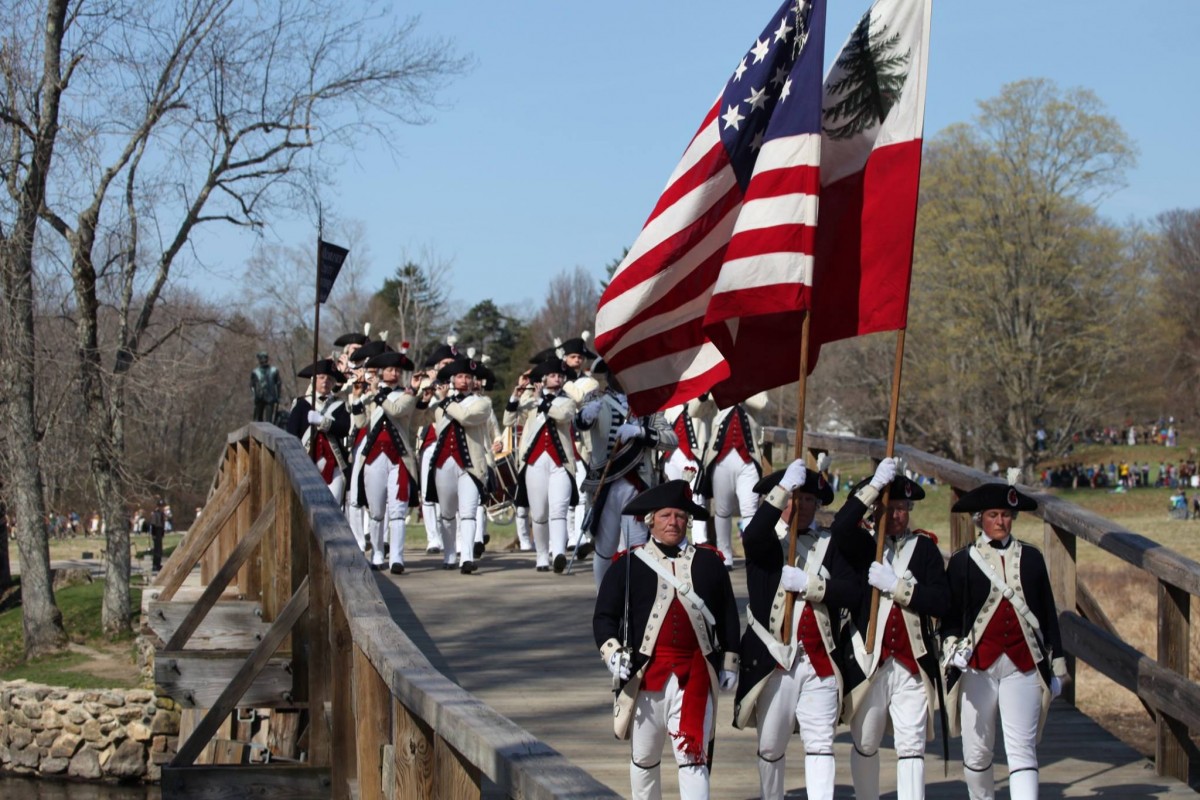 The old North Bridge at Minute Man National Historical Park is an important historical site and served as the inspiration for one of Ralph Waldo Emerson’s famous poems. Photo by National Park Service.
The old North Bridge at Minute Man National Historical Park is an important historical site and served as the inspiration for one of Ralph Waldo Emerson’s famous poems. Photo by National Park Service.
“The Concord Hymn,” a poem by Ralph Waldo Emerson, speaks of “the shot heard round the world.” This is a reference to the battles of Lexington and Concord and has since become a famous way to refer to the beginning of the Revolutionary War. Minute Man National Historical Park in Massachusetts brings revolutionary history to life and honors the poem Emerson created to memorialize the first battles at the North Bridge. Emerson’s study at his home in Concord overlooked the North Bridge and much of the nature surrounding it. His novel Nature was a groundbreaking essay-turned-book that was influential in the wake of the American transcendentalist movement. Tour The Old Manse National Historic Landmark in Massachusetts to see Emerson’s study in the birthplace of transcendentalism.
“The happiest man is he who learns from nature the lesson of worship” - Ralph Waldo Emerson, from Nature
Willa Cather
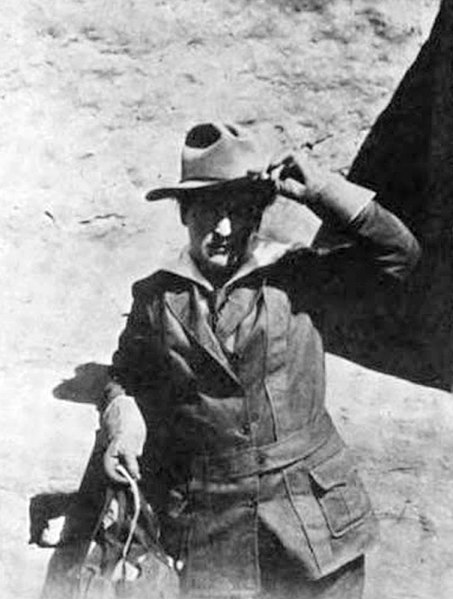 Willa Cather found inspiration in many places. Here she is at Mesa Verde National Park in Colorado. Photo in the Public Domain.
Willa Cather found inspiration in many places. Here she is at Mesa Verde National Park in Colorado. Photo in the Public Domain.
Willa Cather truly captured the spirit of the pioneer era in her novels and short stories. Growing up in Nebraska, Cather was able to draw on personal experience to create characters and settings for her regional fictional works. Her own childhood home is featured in her stories, such as “The Best Years” and “Old Mrs. Harris.” Her neighbor, Annie Pavelka, inspired the namesake character in “My Antonia,” a novel that explores the diverse cultures that were prominent in Cather’s small town. She cherished and attributed much of her success to her childhood and hometown. Cather once said, "A book is made with one's own flesh and blood of years ... it is cremated youth." Visit her childhood home, The Willa Cather House National Historic Landmark in Nebraska, and explore the surrounding historic places that influenced Cather so greatly.
“To fulfil the dreams of one's youth; that is the best that can happen to a man. No worldly success can take the place of that.” - Willa Cather
The literary history that accompanies our public lands make them even more incredible! Check out more influential public lands authors here.
Source: DOI









